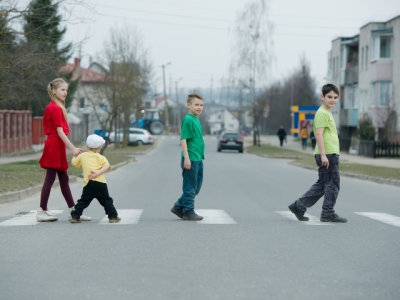
Active transportation networks - including bike lanes, sidewalks, and multi-use trails - help create vibrant communities by providing safe, comfortable, convenient, reliable, efficient, and affordable ways for people to get around. (Active Transportation, US DOT) This new grant from the US Department of Transportation helps communities plan or construction active transportation projects.
What does this program fund?
This program funds two categories of grants:
- Planning and Design grants fund development of plans for active transportation networks and active transportation spines. Projects must cost at least $100,000.
- Construction grants fund safe and connected active transportation facilities. Facilities must be part of an active transportation network or spine and must cost at least $15 million.
Active transportation networks are facilities that connect between destinations within a community or metropolitan region, including schools, workplaces, residences, businesses, recreation areas, medical facilities, and other community areas. Active transportation spines are facilities that connect between communities, metropolitan regions, or states.
How does my community apply?
The Notice of Funding Opportunity (NOFO) can be found on Grants.gov by searching for Opportunity Number 693JJ324NF00012. Planning and Design Grants and Construction Grants have distinct application submission and supporting document requirements. The FHWA strongly recommends use of the template provided. Apply by June 17, 2024.
What will make our application competitive?
Projects that are the most competitive will:
- integrate active transportation facilities with transit services.
- demonstrate broad community support through public input and community leaders commitment to project success and timely implementation.
- provide applicant commitment to traffic safety, regulations, financial incentives, or community design policies that facilitate increase in walking and cycling.
- demonstrate that the project will address existing disparities in bicyclists and pedestrian fatality rates based on race or income level, or provide access to jobs and services for low-income or disadvantaged communities.
- demonstrate how investment in active transportation will advance safety for pedestrians and cyclists, accessibility to jobs and key destinations, economic competitiveness, environmental protection, and quality of life.
Check with your Regional Planning Commission and the Vermont Agency of Transportation as there may be regional or State efforts you can join to reduce your administrative time. Also, when applying for a national transportation grant, discuss your project with the Vermont Office of the Federal Highway Administration. While FHWA Division staff cannot review grant applications, they can discuss process, eligibility, and the general scope of potential projects.
How can my community learn more?
FHWA intends to provide resources to help interested applicants understand this new grant program. You can monitor its program webpage for webinars, frequently asked questions, and other materials.
Where can my community find help with grant writing or management?
The US Department of Transportation has a special webpage, DOT Navigator, that provides grant application resources.
VLCT published a resource, Increasing Municipal Capacity for Grants, that offers ideas for assistance with grants. Many of the capacity builders also provide project management services. Hiring experienced project management assistance can increase the speed of project development and help avoid cost, permitting, and other development surprises.